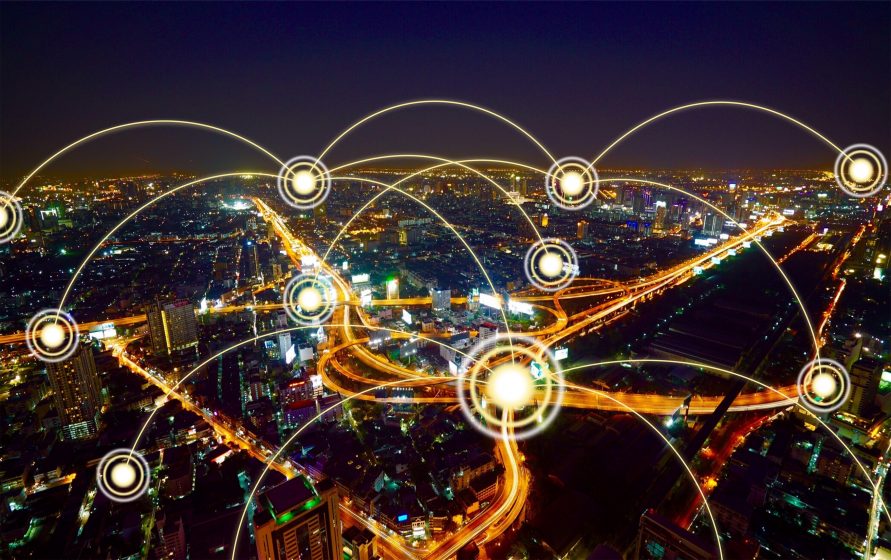
Vision B—The Ecological City: The city is an intricate network of living systems interacting with one another, with built structures, and flows of water, materials, organisms, and information. Urban landscapes, roofs, walls, streetscapes and other outdoor and indoor spaces are seen as opportunities to for nature to provide flood control and stormwater management, wastewater treatment, food production, waste recycling, microclimate moderation, access to nature and recreation, and support biologically diverse ecosystems. Plants grow everywhere, softening the harshness of the urban environment. The urban forest draws carbon from the atmosphere and stores it as wood. Urban waterways flow through the city, supporting aquatic and riparian ecosystems that allow human residents to interact with wildness every day.
These alternative visions are not necessarily mutually exclusive, of course, but in my experience they are rarely combined in the same conversation or planning process. That is, among those who spend their time envisioning and working toward future cities, most are working with either one vision or the other. My question is, what does daily life look like in a future city under each of these paradigms?
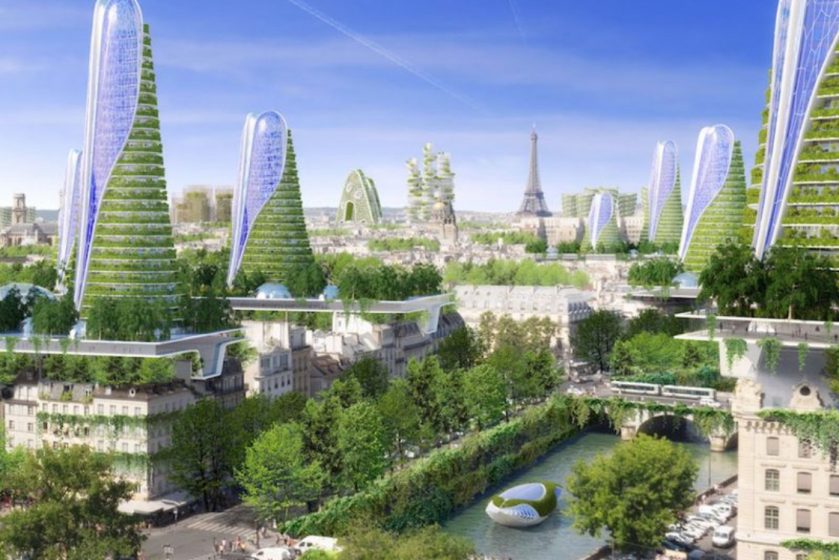
As we see already, digital technology is increasingly integrated into our daily lives and into the ways in which we receive and consume both products and services. I was thinking about this as I read an article in a recent issue of Planning Magazine, in which an ambitious smart city project in Toronto experienced significant backlash over privacy concerns. The big data that runs smart cities is fed by us, as individuals, by using our phones or even by walking down the street. Cities are about connections. As Bettencourt and West point out in their studies of scaling complex phenomena, the variables that are a function of people coming into contact with one another, such as creative innovation, economic activity, etc. scale superlinearly with city size: As city size increases, these connectivity-dependent phenomena are disproportionately enhanced. (So are less-desirable connectivity-dependent phenomena, such as crime and infectious disease.)
Similarly, we have the Smart City dilemma: as cities become more and more “wired”, tremendous amounts of data are generated that can be used for positive purposes, like more efficient and responsive infrastructure and services, but the risk of privacy loss is also increased. Furthermore, much of the work of running the city—the provision of services, operations, communications and so forth—is done by computers and robots. So, what do people doin this city?
An article in The Atlantic in the summer of 2015 explored the implications of a “world without work”. It explored the possibilities of leisure, creative work and craftsmanship, and post-wage contingency work. Predictions about the future of work in an automated age vary from dystopian to utopian but it seems clear that the general trend embodied by the Smart City movement is a continuation of the trend that has its roots in the ancient, tool-making, animal-domesticating past of our species itself—to free us from the arduous tasks associated with meeting our basic needs so we can do other things. The Smart City envisions this at the level of the city itself.
If we embrace the ecological city approach, it will, like the digital technologies, weave its fine, often-invisible threads into the fabric of our daily lives at home, at work, and in the public spaces of our cities. Living systems are part of the infrastructure of the built environment and daily life is essentially lived in a complex, multi-storied garden. The garden is planted and tended, the species chosen for their particular characteristics, from removal of metals in wastewater to aesthetics. In other parts of the garden, nature will simply be invited to come in and self-organize. Because it is composed of living things, the city-garden will experience dynamics and disturbances, from chemical stressors to pest and disease infestations.
To a great extent, we hope the garden will have the capacity to self-organize and self-regulate, but I anticipate there being a significant role for people in tending, managing, and maintaining these green infrastructure systems. For example, in a conversation with an architect about their experience in rehabilitating a building to be a Living Building, he mentioned the need for a building manager—someone who pays attention to the composting toilets, the water harvesting system, and the overall chemical balance of the various interacting systems. I had a parallel conversation with a horticulturist in planning for a demonstration/research landscape revitalization project we are undertaking—the landscape needs a steward, someone who is familiar with the plant communities, soils, scientific equipment, irrigation system, etc. This is a person and who visits regularly to observe what is happening and if an action needs to be taken they know what to do or who to talk to.
Work in the ecological city involves spending time paying attention to how things are working around us. If buildings or groups of buildings (districts) incorporate living systems such as green roofs or walls, stormwater bioretention ponds (rain gardens), and eco-machines for wastewater treatment, these systems require regular attention from someone who is familiar with that particular system. Ecological systems are complex dynamic systems. While they may be designed, that is, assembled to perform a particular set of functions, each is a unique assemblage of interacting species within a particular chemical and physical environment. While someone trained in working with ecologically designed systems may be able to visit one and offer some insight, only someone intimately familiar with that particular system will be able to recognize behavior of the system that is not within normal parameters, or the effects of specific additions or manipulations. This kind of work involves building relationships. Even in individual residences of an ecological city, there will be some tending to be done; as today we maintain our homes by fixing breakages or leaks, for example, in the future we may need to water and monitor the living elements of our homes. Everyone in the ecological city is a gardener with intimate ecological knowledge of the complex systems that support daily life.
So, it appears that while the smart city reduces work, the ecological city creates work. However, the kind of work created by the ecological city is the kind of work that city-dwellers are strongly attracted to, as we see in the tremendous popularity of urban gardening and greening in cities around the world. This is work that puts those who feel disempowered by city life in a position to reclaim their individual agency to be self-sufficient, to provide for themselves, and to have a relationship with non-human nature. The smart city, on the other hand, removes what little need currently exists for us to attend to our environments—it is not the responsibility of individuals to pay attention to the workings of the infrastructure around us, nor are we empowered to take action. Instead, our digital environments tend to ourneeds and desires, perhaps before we are even aware of them.
I think that a future in which our lives are surrounded by and intertwined with ecological infrastructure systems offers an antidote or balance to the future in which our lives are constantly monitored and informed by digital technologies. The internet is full of articles about the negative impacts of devices on our relationships and our mental and physical health, while it is also full of articles on the positive impacts of access to greenspace and natural systems on our relationships and mental and physical health. We are looking at future cities that are increasingly technologically complex, but there are two possible forms of that technology: the digital, big data variety and the ecological variety. Perhaps these are inherently complementary paradigms.
Sarah Hinners
Salt Lake City
References
Barth, B. (2019). Smart cities or surveillance cities? Planning, March issue.
Bettencourt, L., Lobo, J., Helbing, D., Kuhnert, C. & West, G. (2007). Growth, innovation, scaling, and the pace of life in cities. PNAS104(17): 7301-7306.
Thompson, D. (2015). A world without work. The Atlantic, July/August issue.

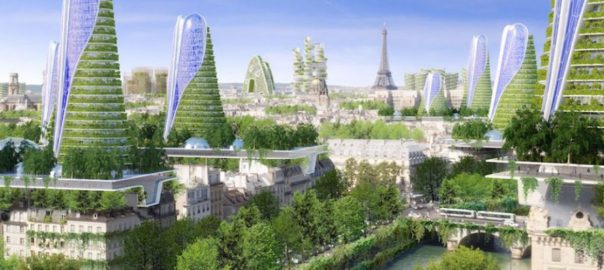






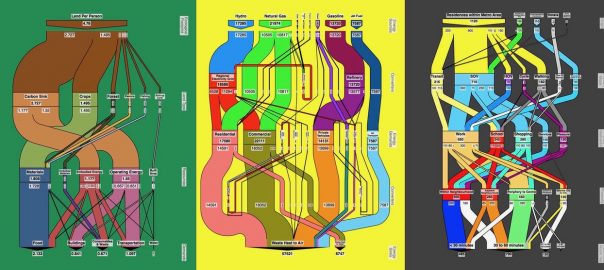
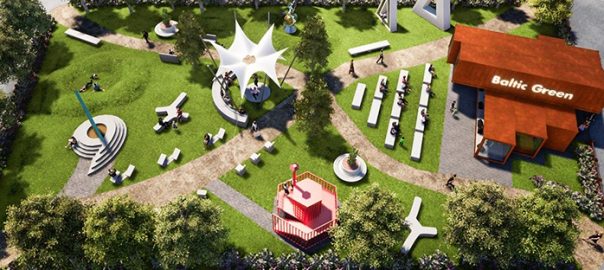
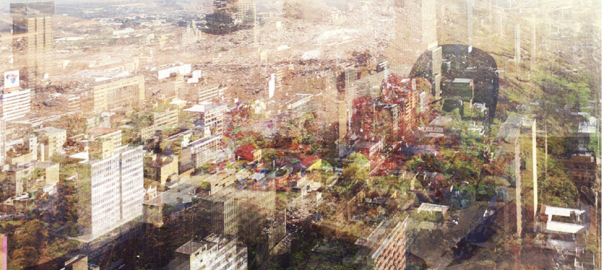
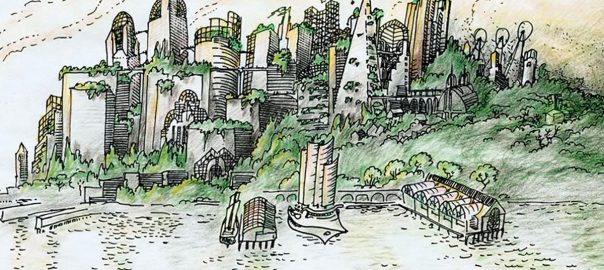
Putting plants on buildings doesn’t “Green” say no respect of what constitutes aesthetics when they cant even maintain present infrastructure, worry about putting tons of weight (water and plants) plants need water! lots of it, otherwise you’re growing modest succulents. Oh, and by the way, office towers have gone obsolete since Coronavirus demonstrated to companies that employees might as well just work from home. Of course, these vanity projects have to get their permits far in advance of construction, so this confection no doubt got its approvals before the virus screwed the pooch on this kind of real estate.
AWESOME!